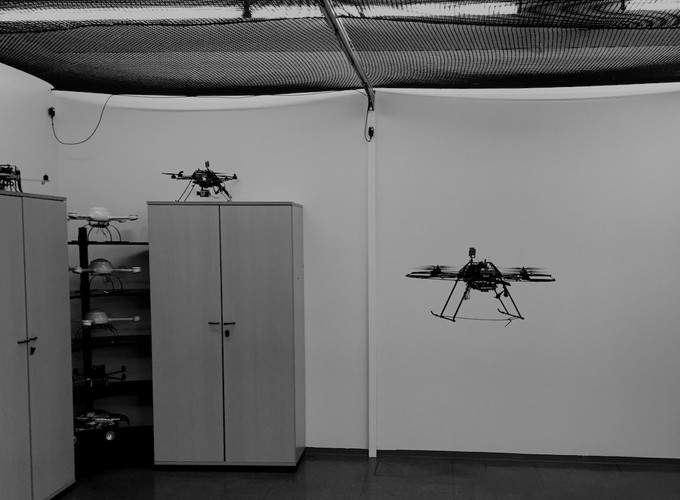Design of an UWB Indoor-Positioning System for UAV Navigation in GNSS-Denied Environments

Design of an UWB Indoor-Positioning System for UAV Navigation in GNSS-Denied Environments
Abstract
Commonly used unmanned aerial vehicle (UAV) platforms rely on the use of global navigation satellite system (GNSS) receivers for navigation. To enable the autonomous navigation of cooperative UAVs in GNSS-denied environments, the use of an ultra-wideband (UWB) positioning system is proposed. This paper discusses the design and evaluation of a practical and cooperative UWB positioning system using newly available integrated radio frequency hardware and antennas. Constellation-aware parameters, as well as other effects like antenna characteristics, are taken into consideration. A non- line-of-sight rejection is implemented based on the ratio of the first path compared to the power of the cumulated channel impulse response. An experiment covering a range of positions and orientations is conducted to gain a broad, representative set of results to assess the system accuracy in real-life usage. In a first experiment the system performance achieves a root-mean-square error of under 10 cm in the horizontal plane and under 20 cm in the three-dimensional space with a probability of 95%. A GNSS emulation system is implemented to evaluate the real-time in- flight use of the UWB positioning system on an experimental UAV carrier. A proof of concept is given that the GNSS emulation may be used with commercially available UAV platforms to augment those systems with indoor navigation capabilities.